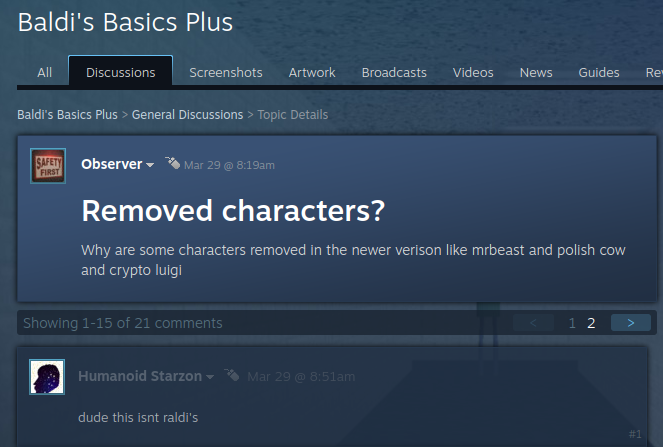ryu@ryu-ThinkPad-T410:~$ kame-editor --no-msaa
libpng warning: iCCP: known incorrect sRGB profile
libpng warning: iCCP: known incorrect sRGB profile
QOpenGLTexture::setData() requires a valid current context
QOpenGLTexture::setData() requires a valid current context
libpng warning: iCCP: known incorrect sRGB profile
libpng warning: iCCP: known incorrect sRGB profile
ALSA lib pcm.c:2495:(snd_pcm_open_noupdate) Unknown PCM cards.pcm.rear
ALSA lib pcm.c:2495:(snd_pcm_open_noupdate) Unknown PCM cards.pcm.center_lfe
ALSA lib pcm.c:2495:(snd_pcm_open_noupdate) Unknown PCM cards.pcm.side
ALSA lib pcm_route.c:867:(find_matching_chmap) Found no matching channel map
ALSA lib pcm_route.c:867:(find_matching_chmap) Found no matching channel map
ALSA lib pcm_route.c:867:(find_matching_chmap) Found no matching channel map
ALSA lib pcm_route.c:867:(find_matching_chmap) Found no matching channel map
Cannot connect to server socket err = No such file or directory
Cannot connect to server request channel
jack server is not running or cannot be started
JackShmReadWritePtr::~JackShmReadWritePtr - Init not done for -1, skipping unlock
JackShmReadWritePtr::~JackShmReadWritePtr - Init not done for -1, skipping unlock
QOpenGLShader::compile(Vertex): 0:1(10): error: GLSL 3.30 is not supported. Supported versions are: 1.10, 1.20, and 1.00 ES
*** Problematic Vertex shader source code ***
#version 330 core
#define lowp
#define mediump
#define highp
#line 1
layout(location = 0)in vec3 vertex;
layout(location = 1)in vec2 texCoords;
out vec2 uv;
uniform mat4 mvpMatrix;
void main() {
uv = texCoords;
gl_Position = mvpMatrix * vec4(vertex.x, vertex.y, vertex.z, 1.0);
}
***
QOpenGLShader::compile(Fragment): 0:1(10): error: GLSL 3.30 is not supported. Supported versions are: 1.10, 1.20, and 1.00 ES
*** Problematic Fragment shader source code ***
#version 330 core
#define lowp
#define mediump
#define highp
#line 1
in vec2 uv;
uniform vec4 color;
uniform sampler2D image;
uniform sampler2D ext;
uniform float alpha;
uniform float gradientbrightness;
uniform float gradientalpha;
uniform float alphaext;
uniform float time;
out vec4 fragColor;
void main() {
vec2 newuv = uv;
float ratioX = uv.x / 6.40625;
float rate = 1 / 8000.0;
newuv.y += 0.3 * (-2.0 * newuv.y + 1.0) * ratioX * (ratioX - 1.0);
vec2 offset = vec2(newuv.x - (time * rate), newuv.y + time * rate);
// Moving tiles
vec4 c = texture(image, offset);
// Ensure textures are grayscale
c.rgb = vec3(dot(c.rgb, vec3(0.299, 0.587, 0.114)));
c.a = min(c.r, c.a) * alpha;
c.rgb = vec3(1);
// Static tiles
vec4 fixedTexture = texture(ext, newuv);
fixedTexture.rgb = vec3(dot(fixedTexture.rgb, vec3(0.299, 0.587, 0.114)));
fixedTexture.a = min(fixedTexture.a, fixedTexture.r) * alphaext;
fixedTexture.rgb = vec3(1);
// Background color
vec4 bottom = color;
bottom.a = 1;
vec4 top = mix(bottom, vec4(gradientbrightness, gradientbrightness, gradientbrightness, 1), gradientalpha);
top.a = 1;
vec4 gradient = bottom * (1 - mod(uv.y / 3.75, 1.0)) + top * mod(uv.y / 3.75, 1.0);
gradient.a = 1;
vec4 opaque = mix(c, fixedTexture, 0.5);
opaque.a = min(1, opaque.a * 2);
opaque.rgb = vec3(gradientbrightness, gradientbrightness, gradientbrightness);
fragColor = vec4(mix(gradient.rgb, opaque.rgb, opaque.a), gradient.a + opaque.a);
}
***
QOpenGLShader::compile(Vertex): 0:1(10): error: GLSL 3.30 is not supported. Supported versions are: 1.10, 1.20, and 1.00 ES
*** Problematic Vertex shader source code ***
#version 330 core
#define lowp
#define mediump
#define highp
#line 1
layout(location = 0)in vec3 vertex;
layout(location = 1)in vec2 texCoords;
out vec2 uv;
uniform mat4 mvpMatrix;
void main() {
uv = texCoords;
gl_Position = mvpMatrix * vec4(vertex.x, vertex.y, vertex.z, 1.0);
}
***
QOpenGLShader::compile(Fragment): 0:1(10): error: GLSL 3.30 is not supported. Supported versions are: 1.10, 1.20, and 1.00 ES
*** Problematic Fragment shader source code ***
#version 330 core
#define lowp
#define mediump
#define highp
#line 1
in vec2 uv;
uniform sampler2D image;
uniform float time;
out vec4 fragColor;
void main() {
vec2 newuv = vec2(uv.x - time / 1008.0, uv.y + 16 / 256.0);
fragColor = texture(image, newuv);
}
***
QOpenGLShader::compile(Vertex): 0:1(10): error: GLSL 3.30 is not supported. Supported versions are: 1.10, 1.20, and 1.00 ES
*** Problematic Vertex shader source code ***
#version 330 core
#define lowp
#define mediump
#define highp
#line 1
layout(location = 0)in vec3 vertex;
layout(location = 1)in vec3 aNormal;
uniform mat4 mvpMatrix;
uniform mat4 mMatrix;
out vec3 fragPos;
out vec3 lightPos;
out vec3 normal;
out vec3 vertexOut;
void main() {
gl_Position = mvpMatrix * vec4(vertex.x, vertex.y, vertex.z, 1.0);
fragPos = vec3(mMatrix * vec4(vertex, 1.0));
lightPos = vec3(mMatrix * vec4(0, 15, 1, 1.0));
normal = aNormal;
vertexOut = vertex;
}
***
QOpenGLShader::compile(Fragment): 0:1(10): error: GLSL 3.30 is not supported. Supported versions are: 1.10, 1.20, and 1.00 ES
*** Problematic Fragment shader source code ***
#version 330 core
#define lowp
#define mediump
#define highp
#line 1
in vec3 fragPos;
in vec3 lightPos;
in vec3 normal;
in vec3 vertexOut;
uniform vec4 maincolor;
uniform vec4 dark;
uniform vec4 light;
out vec4 fragColor;
void main() {
vec3 ambientcolor = mix(vec3(maincolor), vec3(light), min(1, abs(vertexOut.z - normal.b)));
ambientcolor = mix(ambientcolor, vec3(dark), min(1, abs(normal.r)));
vec3 lightColor = vec3(1, 1, 1);
float ambientStrength = 0.7;
vec3 ambient = ambientStrength * lightColor;
// diffuse
vec3 norm = normalize(normal);
vec3 lightDir = normalize(lightPos - fragPos);
float diff = max(dot(norm, lightDir), 0.0);
vec3 diffuse = diff * lightColor;
vec3 result = (ambient + diffuse) * ambientcolor;
fragColor = vec4(result, 1.0);
}
***

